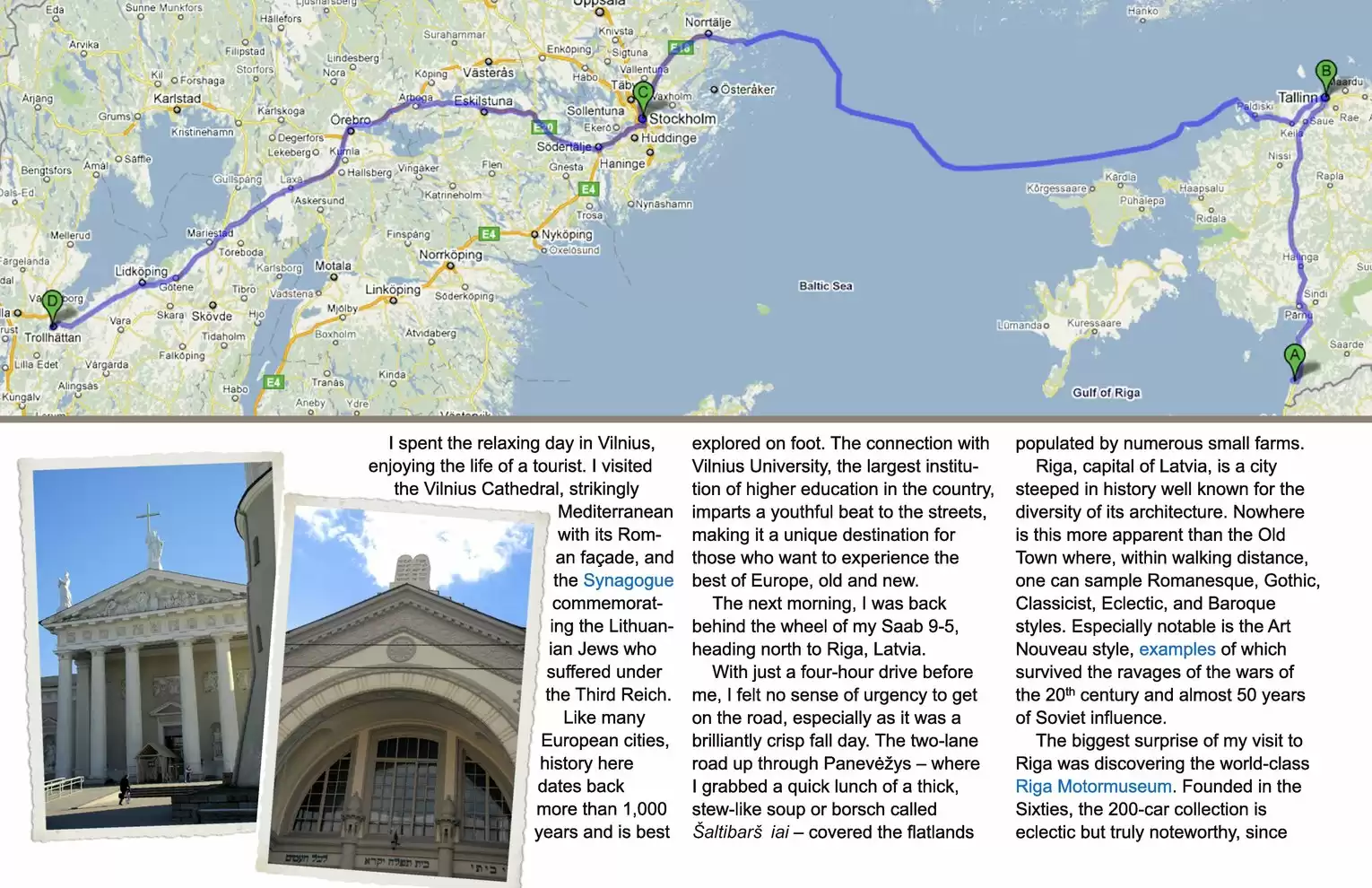
I spent the relaxing day in Vilnius, enjoying the life of a tourist. I visited the Vilnius Cathedral, strikingly Mediterranean with its Roman façade, and the Synagogue commemorating the Lithuanian Jews who suffered under the Third Reich. Like many European cities, history here dates back more than 1,000 years and is best explored on foot. The connection with Vilnius University, the largest institution of higher education in the country, imparts a youthful beat to the streets, making it a unique destination for those who want to experience the best of Europe, old and new.
The next morning, I was back behind the wheel of my Saab 9-5, heading north to Riga, Latvia. With just a four-hour drive before me, I felt no sense of urgency to get on the road, especially as it was a brilliantly crisp fall day. The two-lane road up through Panevėžys--where I grabbed a quick lunch of a thick, stew-like soup or borsch called Šaltibarščiai--covered the flatlands populated by numerous small farms.
Riga, capital of Latvia, is a city steeped in history well known for the diversity of its architecture. Nowhere is this more apparent than the Old Town where, within walking distance, one can sample Romanesque, Gothic, Classicist, Eclectic, and Baroque styles. Especially notable is the Art Nouveau style, examples of which survived the ravages of the wars of the 20th century and almost 50 years of Soviet influence.
The biggest surprise of my visit to Riga was discovering the world-class Riga Motormuseum. Founded in the Sixties, the 200-car collection is eclectic but truly noteworthy, since
| Previous Page | Next Page |
Contents
Features:
- Old Faithful Road Trip
- Tank of Gas Adventure: Berks County Wine Trail
- How to Survive Your First RV Road Trip
- Driving the Baltic Way
Departments:
- Behind the Wheel: 2011 Mitsubishi Lancer
- Behind the Wheel: 2011 Volkswagen Touareg Hybrid
- Not Found on eBay
- Travel and Book Reviews
- Travel News
- Auto News
- Cruising Round-Up
- Contributors